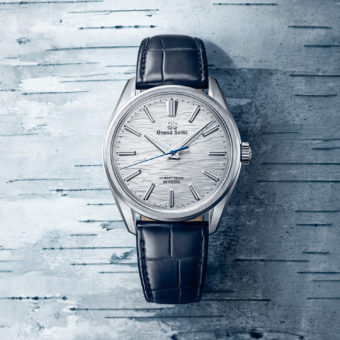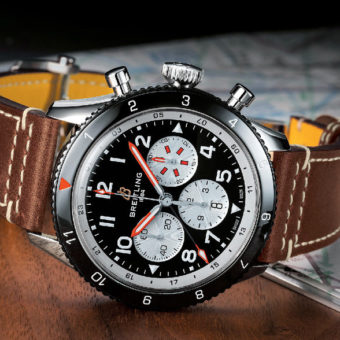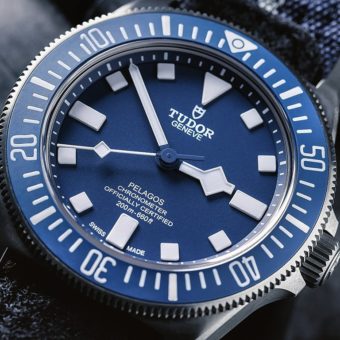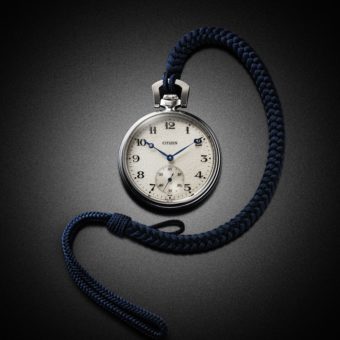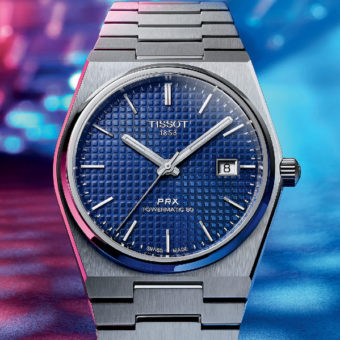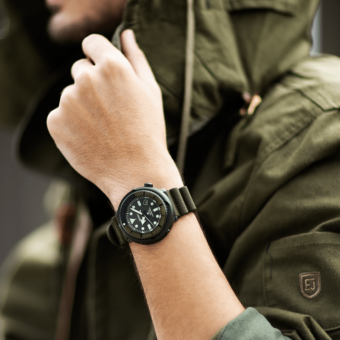
The first month of a new decade: what better time to mull over other promising (albeit not always successful) beginnings? Test your knowledge of a dozen watch-world firsts (the answers are at the end).

1. In 1957, Hamilton introduced the first
A. watch powered by electricity
B. watch wound by a micro rotor
C. single-button chronograph
D. watch with bi-directional winding
2. In 1972, Hamilton introduced the first
A. quartz watch
B. quartz watch with a frequency of 32,768 Hz
C. digital watch
D. digital watch with a liquid crystal display
3. Citizen launched the Crystron Solar Cell, the world’s first light-powered analog watch, in
A. 1970
B. 1976
C. 1984
D. 1988
4. The first watch with no balance wheel was the
A. Quartz Astron by Seiko
B. Ventura by Hamilton
C. Accutron by Bulova
D. Constellation by Omega
5. In 1934, Breitling patented the first
A. watch with a slide-rule bezel
B. split-seconds chronograph
C. single-pusher chronograph
D. chronograph with two separate pushers
6. The world’s first TV commercial was for
A. Bulova
B. Timex
C. Elgin
D. Hamilton
7. In 1990, IWC Schaffhausen introduced the first wristwatch with a
A. perpetual calendar and chronograph
B. minute repeater
C. tourbillon
D. perpetual calendar, chronograph and minute repeater
8. In the mid-18th century, King George III of England bought for his wife, Queen Charlotte, a watch that incorporated the world’s first
A. seconds hand
B. chronograph
C. lever escapement
D. detent (chronometer) escapement
9. The first effective self-winding system was invented by
A. Abraham-Louis Breguet
B. Abraham-Louis Perrelet
C. Pierre Le Roy
D. George Graham
10. The first wristwatch movement wound by a rotor was patented by
A. John Harwood
B. Hans Wilsdorf
C. Edmond Jaeger
D. Louis Brandt
11. The first quartz watch movement prototype was completed in 1967 and called the
A. Alpha 31
B. Beta 21
C. Delta 33
D. Omega 35
12. The Concord Delirium of 1979 was the first watch
A. less than 2 mm thick
B. wound by means of a micro rotor
C. with quartz movement and analog dial
D. with both analog and digital displays
ANSWERS:
1. A. On Jan. 3, 1957, Hamilton held a press conference in New York to announce the world’s first electric watch, which had a traditional balance and hairspring but was powered by a battery rather than a mainspring. The press release issued at the time described the watch as “the first basic change in portable timekeeping in 477 years,” referring to the invention of the mainspring shortly before 1500.
2. C. The watch, called the Pulsar, had been unveiled at a press conference two years earlier but the announcement was premature: the watch consumed a vast amount of electricity and had to be revamped. The Pulsar had an LED (light-emitting diode) display that lit up at the touch of a button and blinked off a few seconds later. It became a darling of celebrities and politicians.
3. B. The watch had an analog dial, most of which was occupied by eight rectangular solar panels. The Crystron’s unprepossessing looks made it a commercial failure.
4. C. Instead of using a balance and hairspring, the watch kept time by means of a tiny tuning-fork-shaped oscillator. The movement was battery-powered. The Accutron, introduced in 1960, was the most accurate watch of its time, losing or gaining no more than about 1 minute per month.
5. D. The patent was for a separate pusher used to return the chronograph hand to zero. Before this invention, chronographs had just one pusher, used to start, stop and, sometimes, reset the chronograph (Breitling’s chronographs were reset via the crown).
6. A. The commercial was broadcast on July 1, 1941 during a Brooklyn Dodgers-Philadelphia Phillies baseball game. It showed a map of the United States with a watch dial in its center.
7. D. The watch was called the Grand Complication. Some purists contended that the watch was not a true grand complication because its chronograph was not of the split-seconds variety. A genuine grand complication, they argued, must have a perpetual calendar, minute repeater and a split-seconds chronograph. In 1993, IWC brought out a watch that did have these three complications (plus a tourbillon for good measure). It was called Il Destriero Scafusia.
8. C. The watch was made by the great British watchmaker Thomas Mudge (1715 to 1794). Completed in 1759, and incorporating a new type of escapement that was the forerunner of virtually every escapement used in watches today, the watch became known as “the Queen’s watch.” The noted watch historian Cedric Jagger notes that it has often been called “the most famous watch in the world.”
9. B. Although there had been other attempts to invent self-winding systems, which, like Perrelet’s made use of an oscillating weight, it was Perrelet (1729 to 1826) who actually succeeded. He in fact experimented with two types of winding systems, one with a weight that moved back and forth, and the other with a rotor that spun around an axis, much like the winding rotors on today’s automatic watches. The former worked better than the latter (Abraham-Louis Breguet used a similar device in his perpetuelle watches). That’s because pocketwatches, which were of course the only type of watches used in Perrelet’s day, did not experience enough motion to make the rotor spin with sufficient frequency.
10. A. John Harwood was a British watchmaker who fought in World War I. During his time in the trenches, he noted the need for watches that would be impervious to dirt. In the 1920s, he patented a wristwatch movement with a rotor that wound the movement’s mainspring by rotating around an axis when the watch wearer moved his arm (it was the same idea Abraham-Louis Perrelet had experimented with in the 18th century). Because the movement did not need to be manually wound, there was no need for a winding-crown-hole in the case, and no entry point for dirt (the watch was set by turning the bezel). The movement was technically flawed and not a commercial success. A few years later, Rolex perfected the idea for use in its “perpetual” watches.
11. B. The movement was the work of a research laboratory called the Centre Électronique Horloger, which was sponsored by a group of Swiss watch companies. After developing the prototypes, the Swiss industry decided not to pursue quartz technology for the time being, and the Japanese company Seiko became the first to market a quartz watch.
12. A. The watch, which had a quartz movement made by ETA, was so thin because it did not have a bottom plate: instead, the parts were attached directly to the case. The next year, Concord brought out the Delirium IV, which was just 0.98 mm thick. But ETA’s engineers had gone too far: the movement was so thin it didn’t work.

